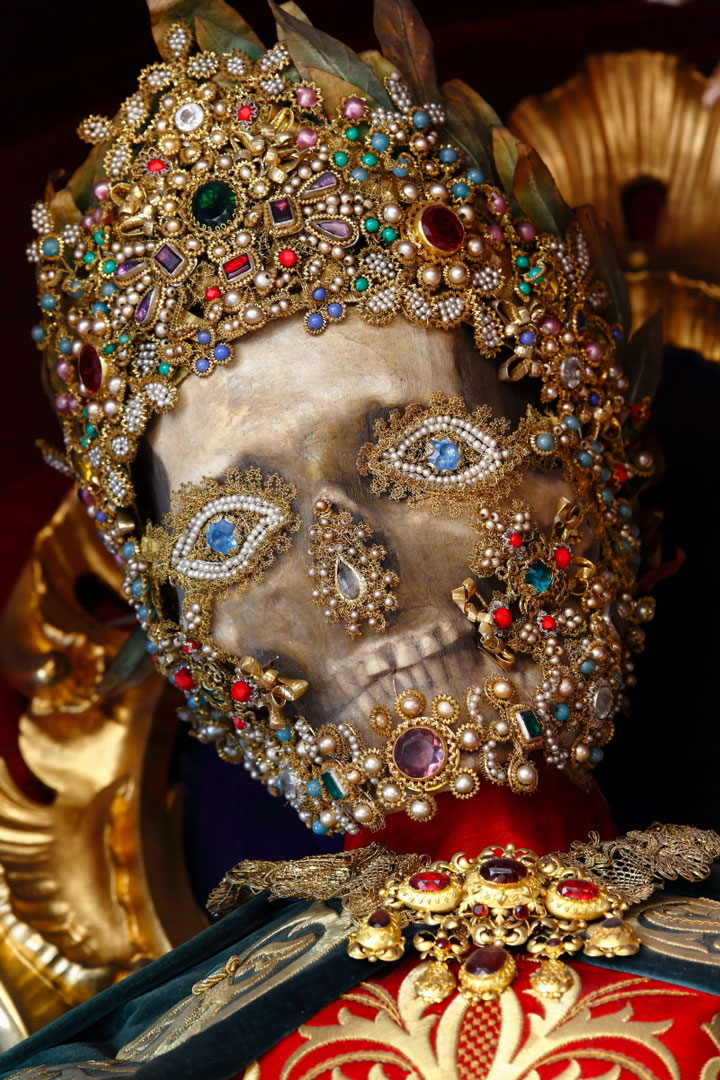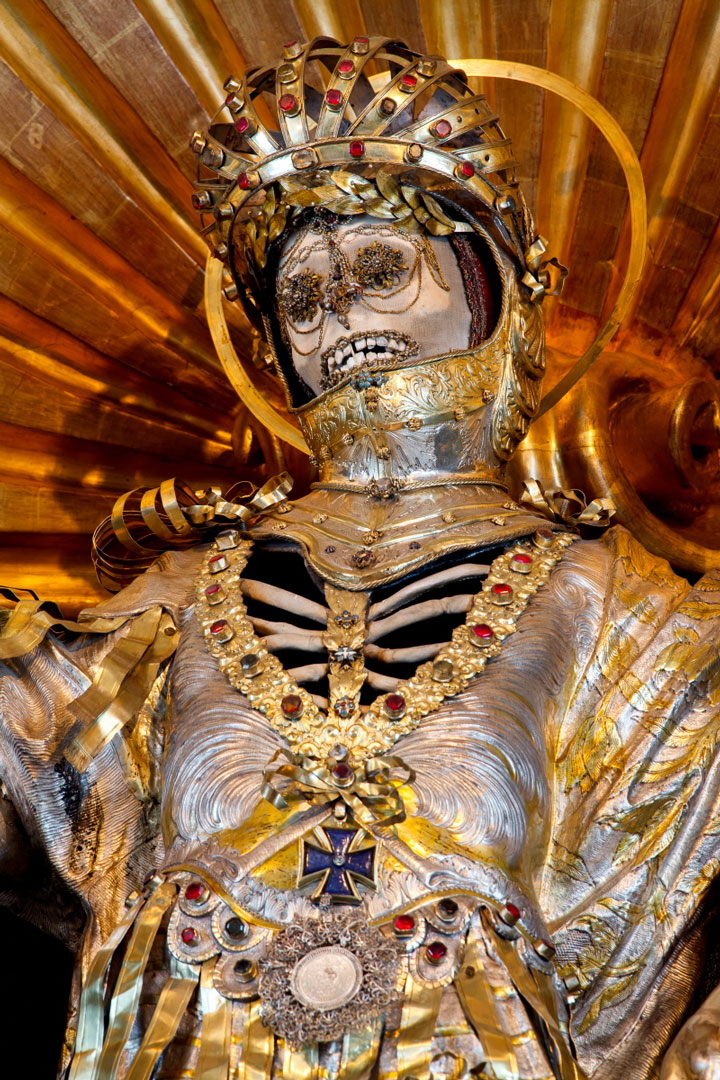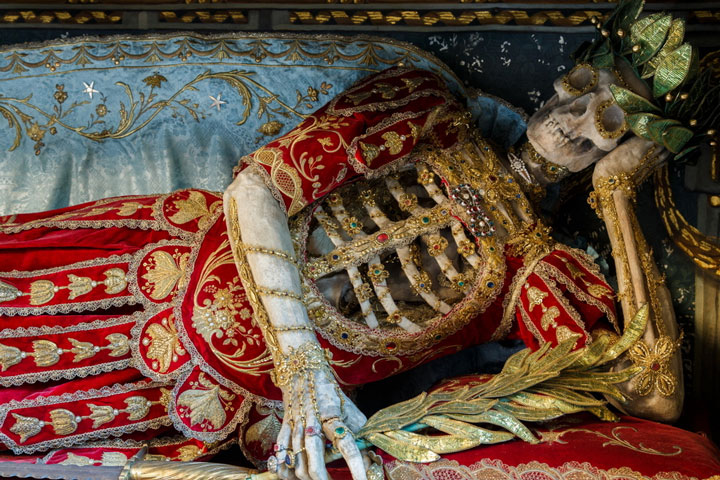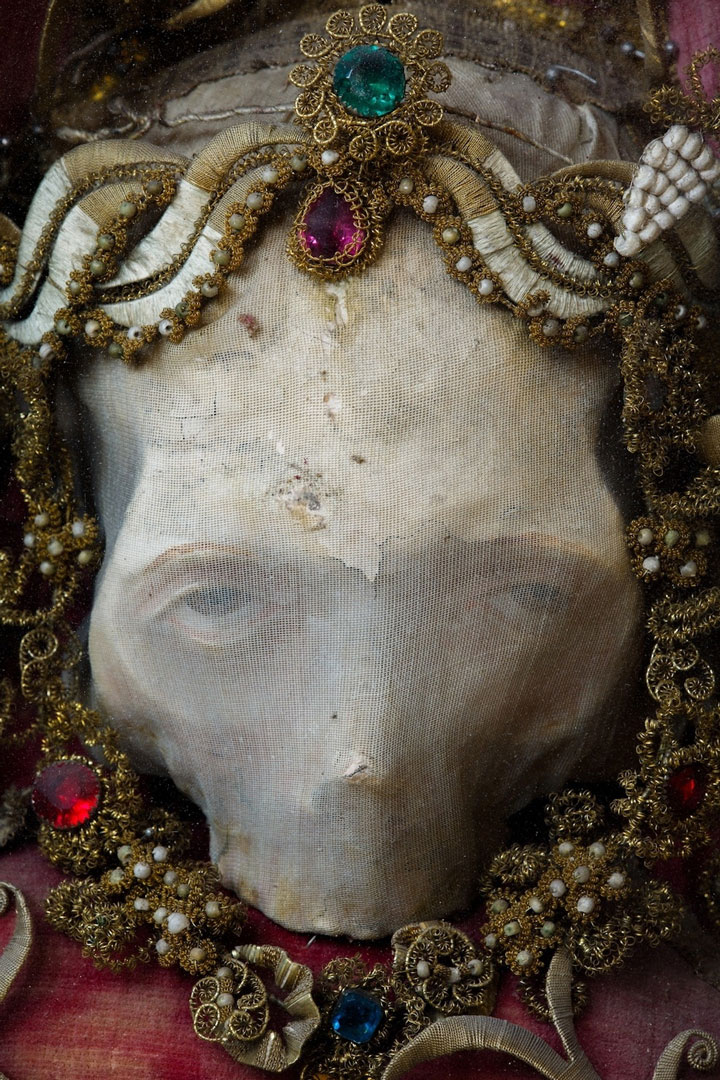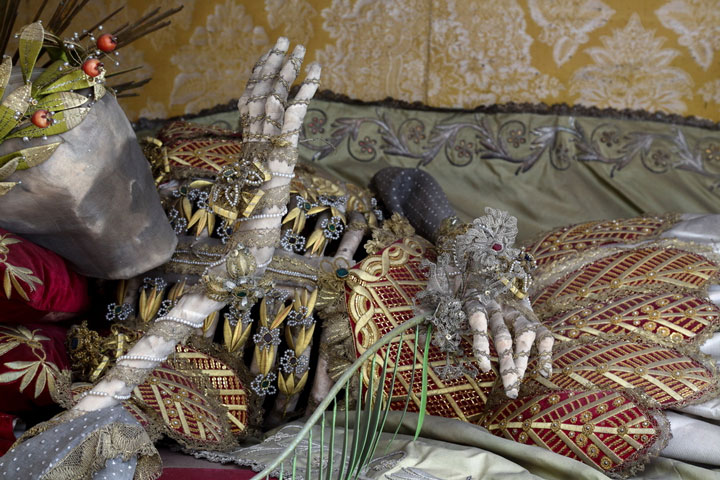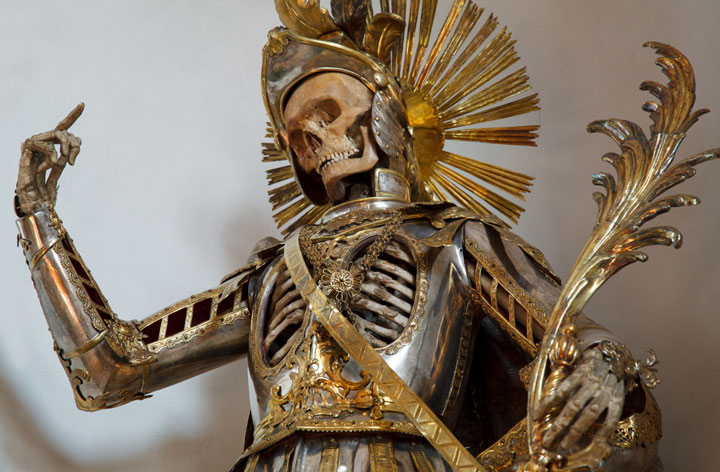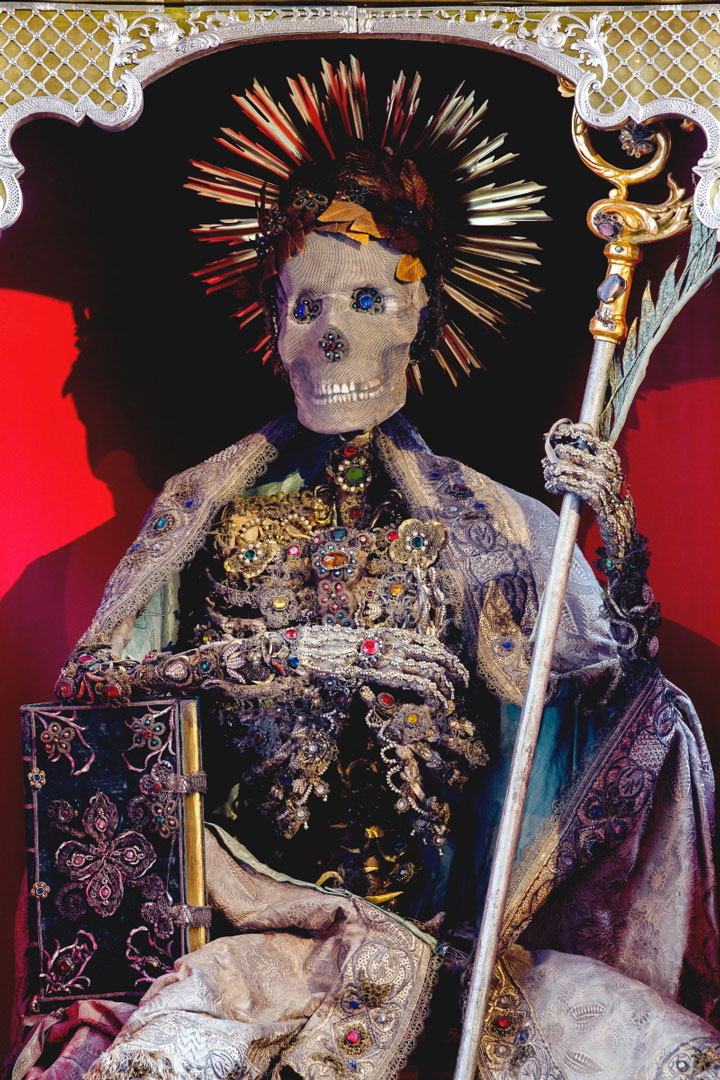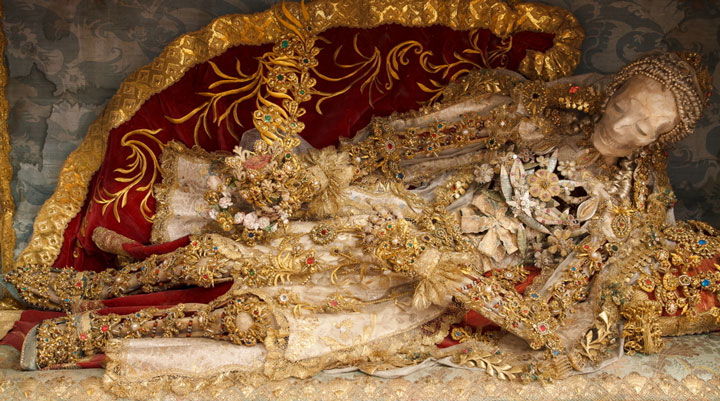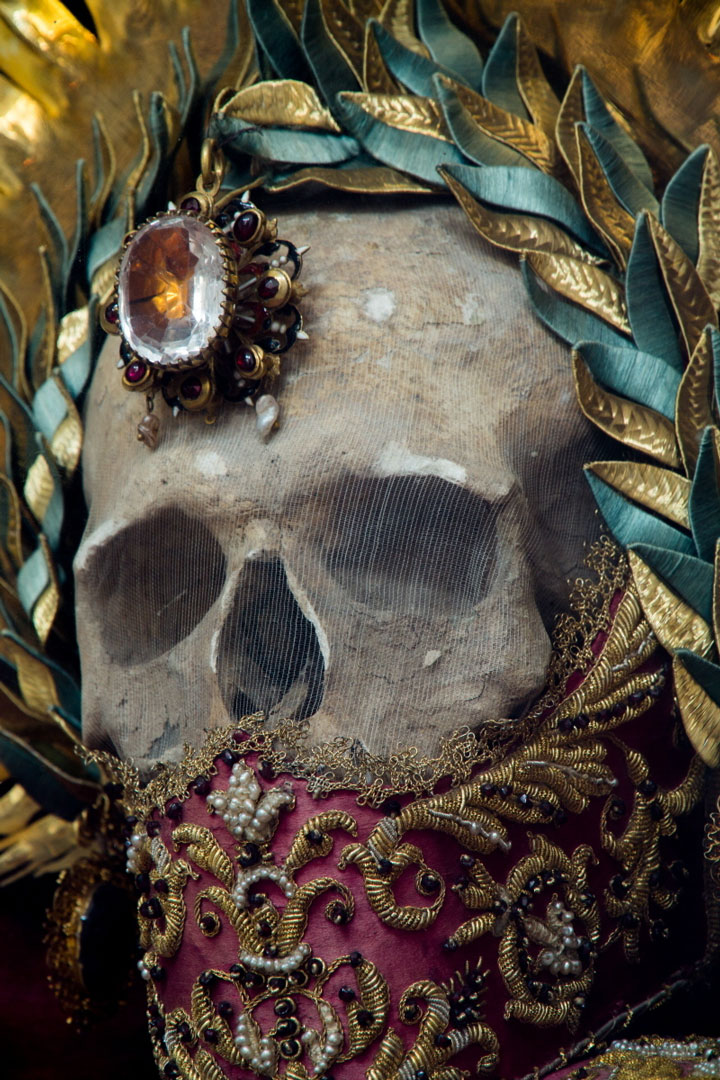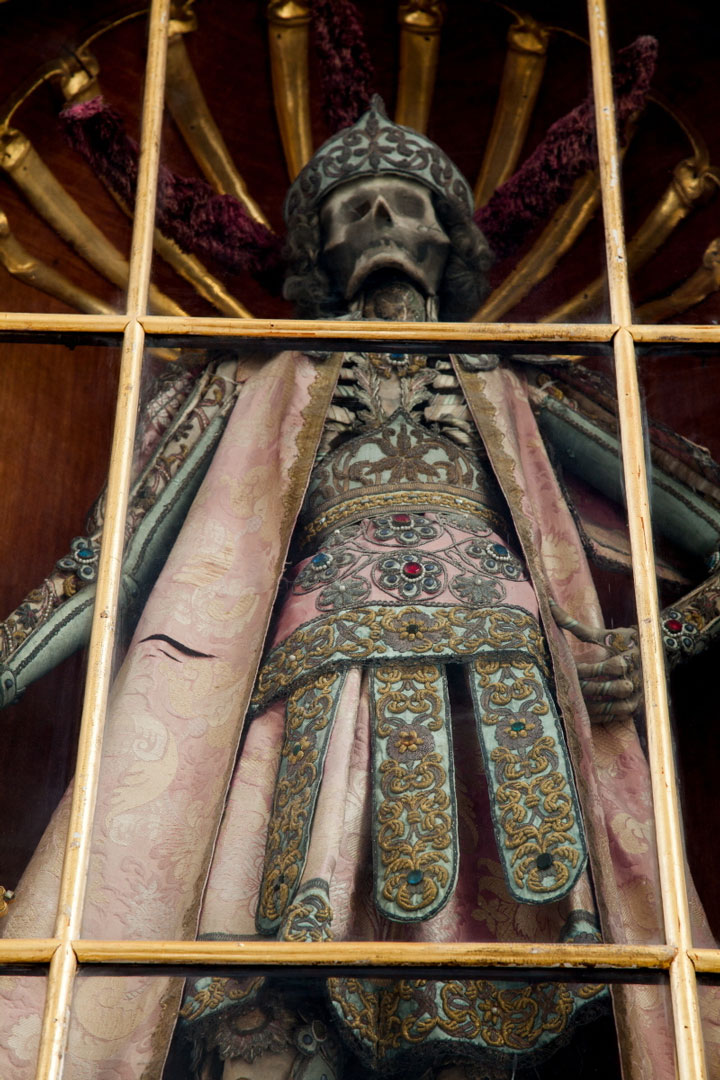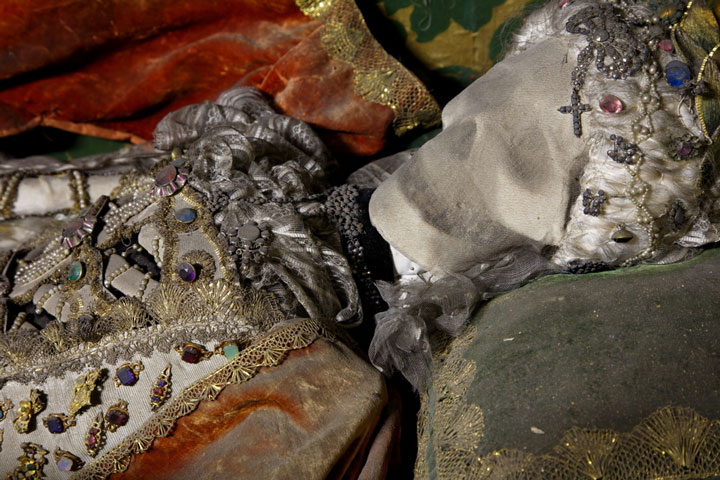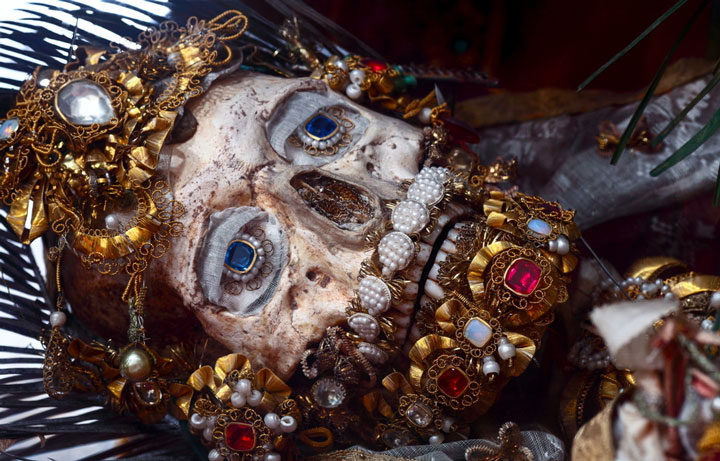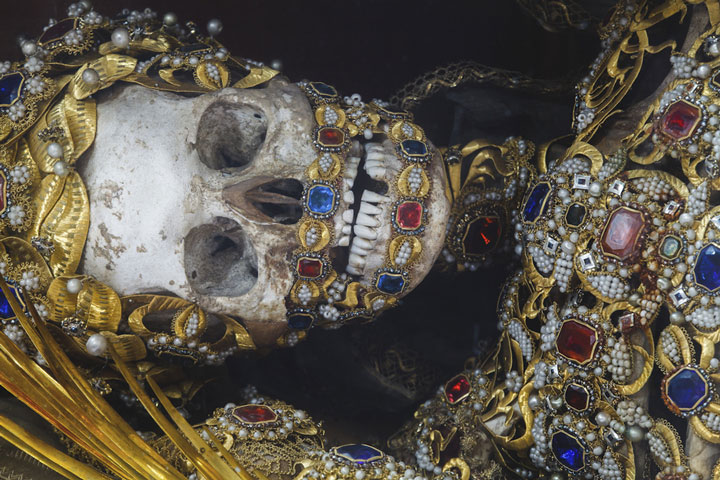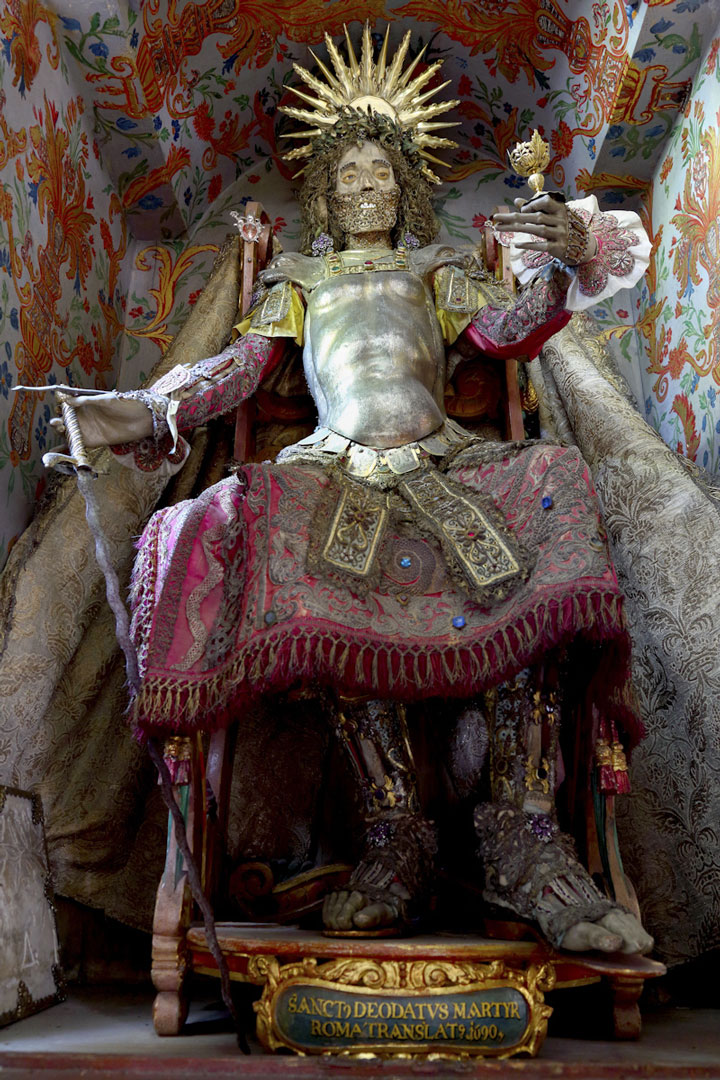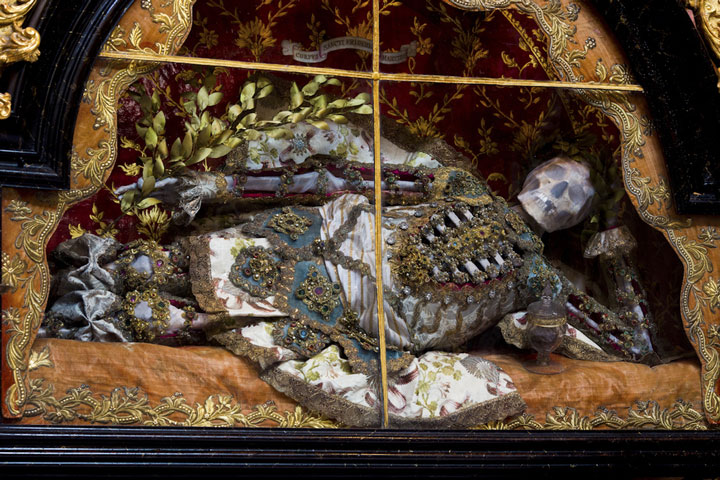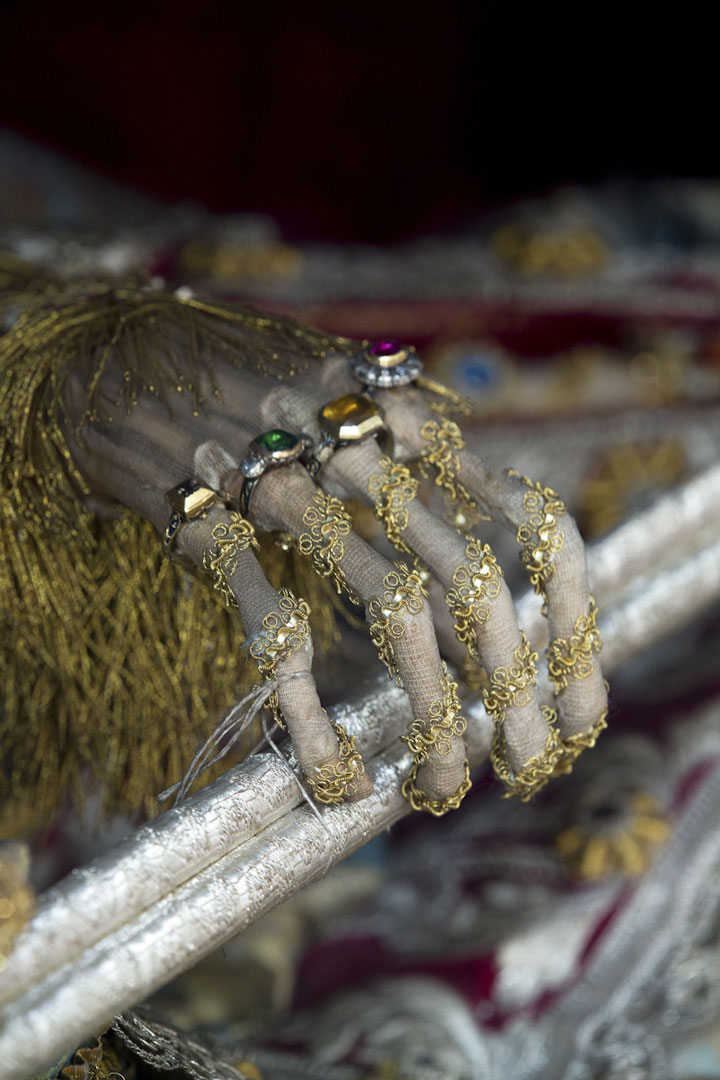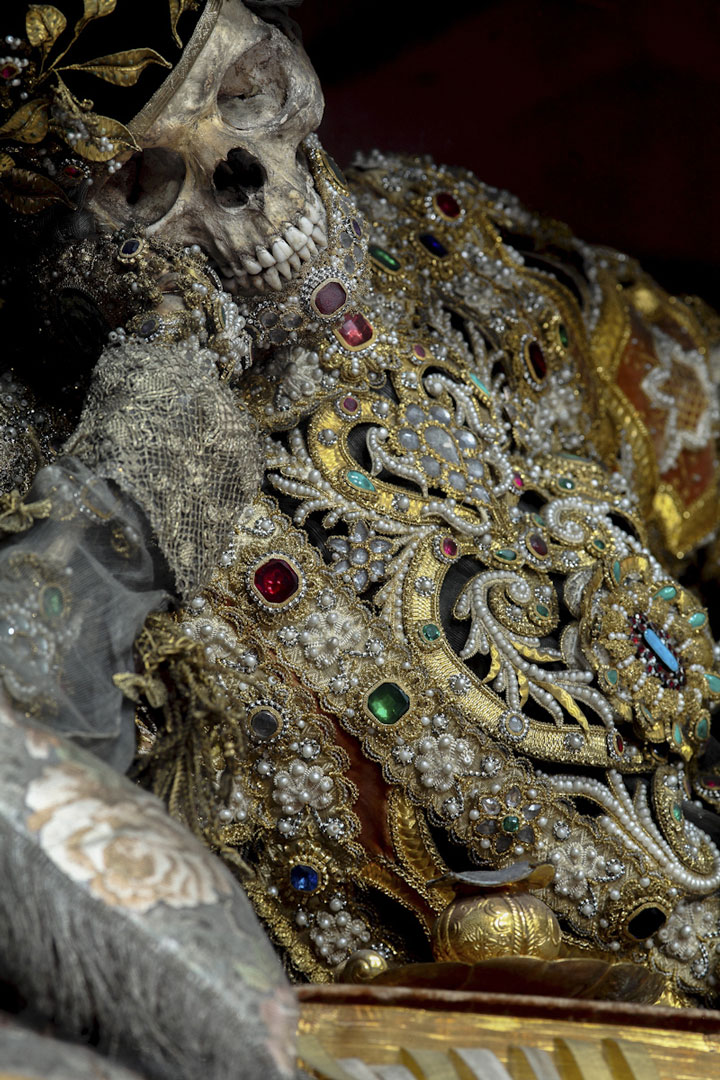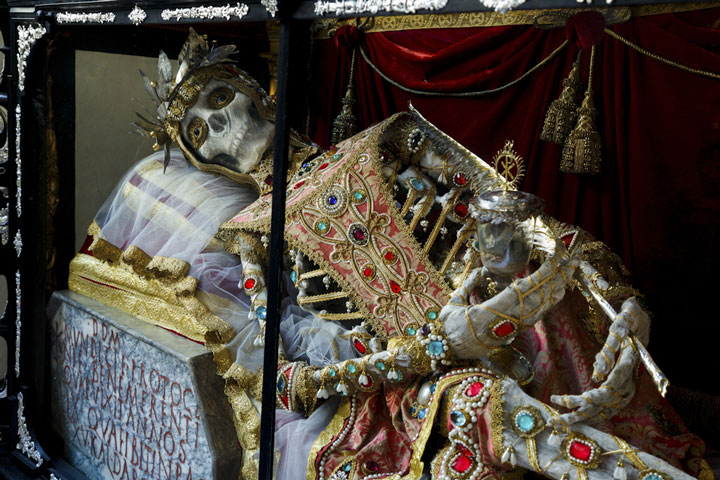Since ancient times, jewelry has been used as fashion accessory for men and women. However, they can also sometimes accompany the dead in their journey of hereafter.
Dr. Paul Koudounaris in his book Heavenly Bodies makes us discover the 19 skeletons of christian martyrs decorated in jewelry and their story. The author of the book who is also a photographer is well known for his studies on the macabre art related to the bones of the dead. Take a guided tour of the history of 19 skeletons sublimated by the jewelry through quotations from the book of Paul Koudouranis .
1. Saint Maxime (Bürglen, Switzerland)
“It is revered for being an early Christian soldier to have died as a martyr. It was decorated in the 17th century.”
2. Saint Constentin (Rorscach, Switzerland)
“Among the most notable decorated skeletons of Switzerland, it was put on display in the church since the 17th century. It is now hidden behind a painted protection. “
3. The skull relic of Saint Die (Roggenburg, Germany)
“In some cases, designers have not found enough of the original skeleton to put the whole body into display. This is apparently the case here where a face of wax and a veil were cast over the skull. “
4. Saint Vincent (Stams, Austria)
“One of the four decorated skeletons in the monastery of Stams, he raises his hand to hide his face in a gesture of humility. “
5. Saint Pancrate (Wil, Switzerland)
“As Saint-Maxime, he wears armor because he was considered for being among the first of the early Christians soldiers to have died as a martyr. His armor was designed by a jeweler in Augsburg in Germany in the 18th century. The skeleton was subsequently vandalized in the 20th centur, his skull was stolen and then replaced. “
6. Konrad II (Mondsee, Austria)
7. Saint Felix (Gars Am In, Germany)
“It was placed in the monastery of the city in the 17th century.”
8. Holy Lucienne (Heiligkreuztal, Germany)
“This is one of four complete skeletons that were once possessed by the nuns of the Convent of Heiligkreuztal.”
9. Saint Léonce (Muri, Switzerland)
“Among the most famous decorated skeletons decorated, known to be a very popular saint and healer.”
10. Saint Canditus (Irsee, Germany)
“This is one of the three skeletons that once belonged to the monastery of the city of Irsee. He wears beautiful clothes donated by local nobles and sewn specifically for the skeleton to show the bones. ”
11. Faustina (Porrentruy, Switzerland)
“This skeleton was deemed too gruesome for modern tastes and has been moved to a cabinet ”
12. Saint Valere (Weyarn, Germany)
“It is one of the most decorated skeletons’ of Germany.”
13. St. Albert (Burgrain, Germany)
“The skeleton arrived in the monastery of the city of Burgrain that was initially dedicated to Saint George, in the early 18th century. He was then sumptuously decorated by local nuns. ”
14. Saint Die (Rheinau, Germany)
“It is one of two sitting skeletons that arrived in the monastery in the late 17th century.”
15. Saint Friedrich (Melk, Austria)
“It was a gift from the Empress Maria Theresa to the local monastery. Its name is probably invented as it is known as a Christian martyr of Rome but Friedrich is not a Roman name. “
16. Handmade Valentine (Bad Schussenried, Germany)
“He tends his delicate hand to the audience, holding the handle of a torch.”
17. St. Valentin (Waldsassen, Germany)
“It is one of 10 complete decorated skeletons in the church of Waldsassen.”
18. Sainte Munditia (Munich, Germany)
“Once revered for being the patron saint, the skeleton was then barricaded as it was considered too grotesque for modern tastes.”
19. St. Benedict (Bergm am Laim, Munich, Germany)
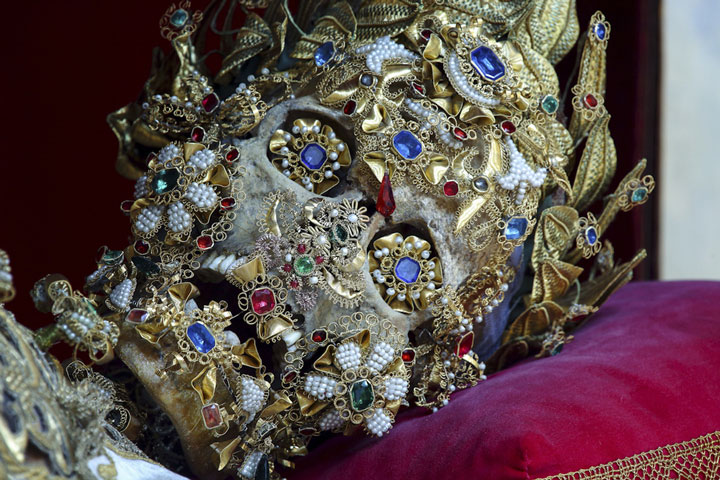 All photos are Paul Koudounaris
All photos are Paul Koudounaris
“One of the most elaborately decorated of the two skeletons that were sent to an old aristocratic church dedicated to St. Michael.”
These photos of skeletons are strange and macabre. Jewelry has been used to decorate the centuries old skeletons. We are all surprised to discover the existence of these decorated skeletons. How do you feel after seeing these gruesome discoveries?
